Cross-Training to Improve Your Freestyle Kiting - Sessions w/Rygo
Last week on Sessions, we made our way to Brazil. In that special two-part episode we spent a week in the Village of Taiba. We caught up with Cabrinha's newest international rider Lucas Arsenault and talked kiteboarding gear with him. The following week, we visited the kite park league down in Icapuí. While there we filmed with two of the industry's hardest-working riders, Colleen Carroll and Sensi Graves.
While filming, it occurred to me that these riders are hands-down the best wakestyle riders in the world. That said, I was able to write up and build a video I've been meaning to do for a while. That is, wakestyle Vs Freestyle kiteboarding. I wanted to incorporate some wakeboarding into the video, so I decided to film with one of MACkite's original team riders.
Steve Lee has been a part of the MACkite family since long before we were making videos on a regular basis. Now living in Florida, Steve has been riding cable, wakeskating and surfing daily. I wanted to link up with him for a shoot to get some extra wakeboarding footage for the video. We also got our hands on the new Slingshot RPM. Expect a full Versus video next week comparing the new RPM vs. the old RPM.
For this blog, I wanted to do a write-up on how to improve your wakestyle riding fast. We'll break down some things you can do to break your personal plateaus and progress faster at your freestyle and wakestyle kiteboarding.
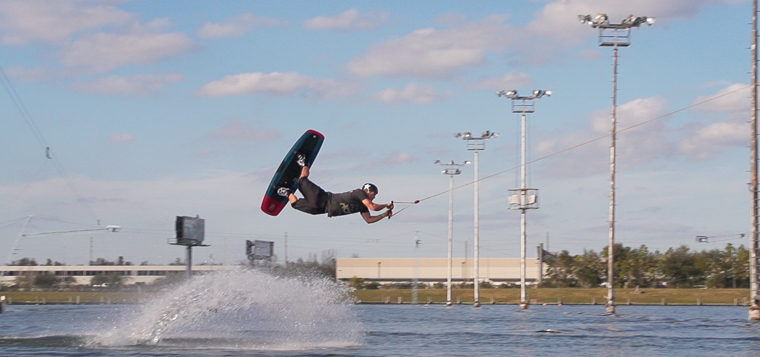
Steve Lee getting his air railey.
Meet Steve Lee
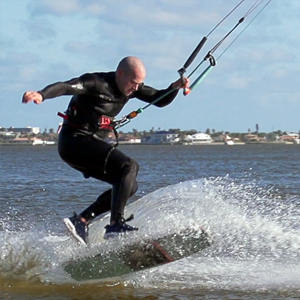 Rider Profile:
Rider Profile:
Steve Lee
Style: Wakeskate / Kitesurf
Home Spot: Central Florida
Current Gear: Liquid Force NV V8 LF Echo 142
Steve Lee is MACkite's original wakestyle rider. Recently, he's crossed over into wakeskating and cableboarding. When it's windy, he's more likely to pair a surfboard or wakeskate with his kite.
You might not see him in many of our videos, but hands down, he's a staple on our team. In fact, he gets more water time than anyone we know. As we progress with more videos you can expect more content with Steve in the coming year.
Ride the gear

Check out Steve's Gear
Gear Talk
The 2018 Liquid Force NV
Unlike our team rider Blake Olsen, Steve is riding last year's model. The 2019 NV has crossed over to a pure wakestyle / freestyle kite. While Steve is no stranger to boots, he prefers to use those at the cablepark and do a bit of everything with his kite. The 2018 NV V8 is more of an all-around kite, meaning it's going to be more well-rounded than the V9 in other aspects of the sport.
The Liquid Force Echo
The Echo has a heavier rocker profile and a stiff flex. It's one of the faster rockered boards out there. Of all the rockered boards from each brand's lineup, it has a unique feel. Expect a smooth, consistent pop and controlled landings. It's made to be used with straps or boots, but favors freestyle, parkstyle and wakestyle riders riding with power and boots.
How to improve your wakestyle kiteboarding fast
I mentioned speaking with Chris about how he has progressed over the years, and he had some insights to share with me, lessons he learned from traditional sports. I've referenced this before in an older back to blind tutorial comparing kiteboarding to skateboarding. The trick to moving forward is learning to fail.
I should mention that the secret to improving at anything is that nothing is "fast". There is no easy road, and anything worth accomplishing takes effort and time. All that said, here are some ways you can speed up the process and save yourself years of frustration.
If you want to get better, it involves three things: training, failing, and getting back up. That's all it actually takes. The trick is getting past those failures sooner than later and keeping fit enough to practice often. It's easy to forget that action sports are still sports.
It all comes down to movement patterns and repetition. When I say "movement patterns", I mean the muscle memory behind, say, doing a back roll. Before taking that trick to blind, you need to have the movement pattern for both the back roll and the raley to blind. They have to be almost second nature. Only then can you bring them together. This simple idea stays true for all of your progression. Work on the basics over and over.
If you want to make consistent progression, you'll need lots of practice, about three sessions a week. Practice the basics and try the next step consistently. The catch-22 in kiteboarding is that it's not always windy! The good news is you can cross train in the gym and at the local cable park.

Cross Train at the Cablepark
When it comes to cable, start practicing air tricks. Back to the point about repetition, in order to progress at a sport, you have to ride a lot. Kiteboarding is hands-down the most fun sport in existence, in my opinion. That said, it’s not always windy. If you want to make great progress at any skill, you should practice a movement pattern at least three times a week.
Let me give you an example. If you want to learn a raley to blind, you can start by doing surface passes at the cable, just spinning around on the water. As you get comfortable after a week or two of consistent practice, you could try popping to blind and passing the bar while riding toeside. Next, take it to small features and eventually the kicker.
The next time you're kiting, it would feel very natural to drop into that blind landing after a raley. As you get better, you could learn air tricks at the cable and practice your freestyle on a daily basis. Every time you get on the kite, those tricks will come with you.
What if you're a complete beginner?
Even if you just spend time on a board once a week, your riding and body awareness are going to improve.
I'll link in a series of basic videos I filmed with Steve a long time ago. These should get you up to speed on cable boarding basics. It's a little dated as far as production, but the points are still valid.
An overview of the crossover from kiteboarding to cableboarding
Taking the corners at the cable park
Learn to land blind on your kiteboard
Take your riding to the next level
Learn how to fall... a lot
The most important thing I've learned from Chris is that you've got to fall in love with failure. Crashing can be fun. It’s easy to fall into the mindset of not wanting to drop your kite. If you want to learn, get used to it. When I first learned, the first question Chris would ask after a session was, "Did you get your kite wet?" If you didn’t, it meant you weren't trying.
I don't mean to try things you can't do. That's a great way to get hurt. What I mean is, always push the edge of what you can do. Practice the basics and try new moves that are the right next step, not three steps ahead. Now, with all this riding you'll need to be able to keep up.That means keeping in shape.
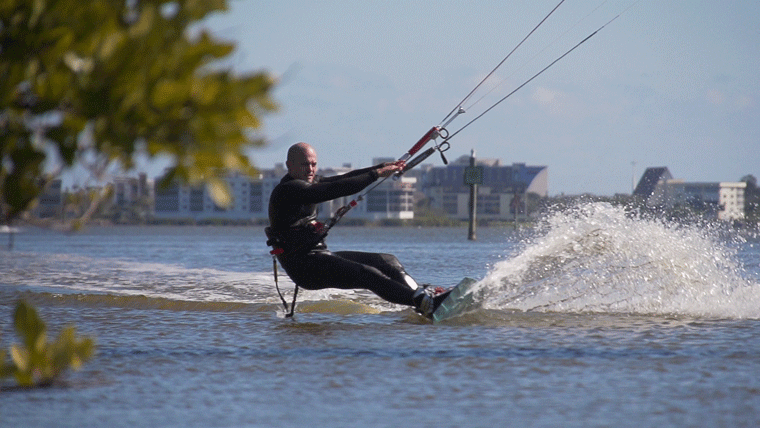
Steve Lee riding the 520 slick in Cocoa Beach
Working out for kiteboarding
Recently, I’ve started working on breaking personal plateaus in my my riding. I had a conversation about this with Chris Bobryk, who is coming back from an injury. We settled on the fact that the key to progression is repetition after repetition and keeping fit. This is the best lesson I’ve learned from Steve and Chris. They stay fit year 'round and pretty much have limitless energy. Once I started my own routine, I was amazed at the difference in my riding and my well-being in general.
Kiteboarding is awesome as it's a sport that can be practiced by almost anyone of any age. It's a sport that doesn't require strength or endurance to master the basics, get air, and have fun! That said, if you want to progress into unhooked riding, you will have to get stronger and work on your endurance.
Tips
- Try calisthenics: Push-ups, dips, squats, and pull-ups are your best friend.
- Practice kite pull-ups: Hands close together pull the bar to your hip like a handle pass.
- Bodyweight squats : These will build your endurance and give you an explosive pop.
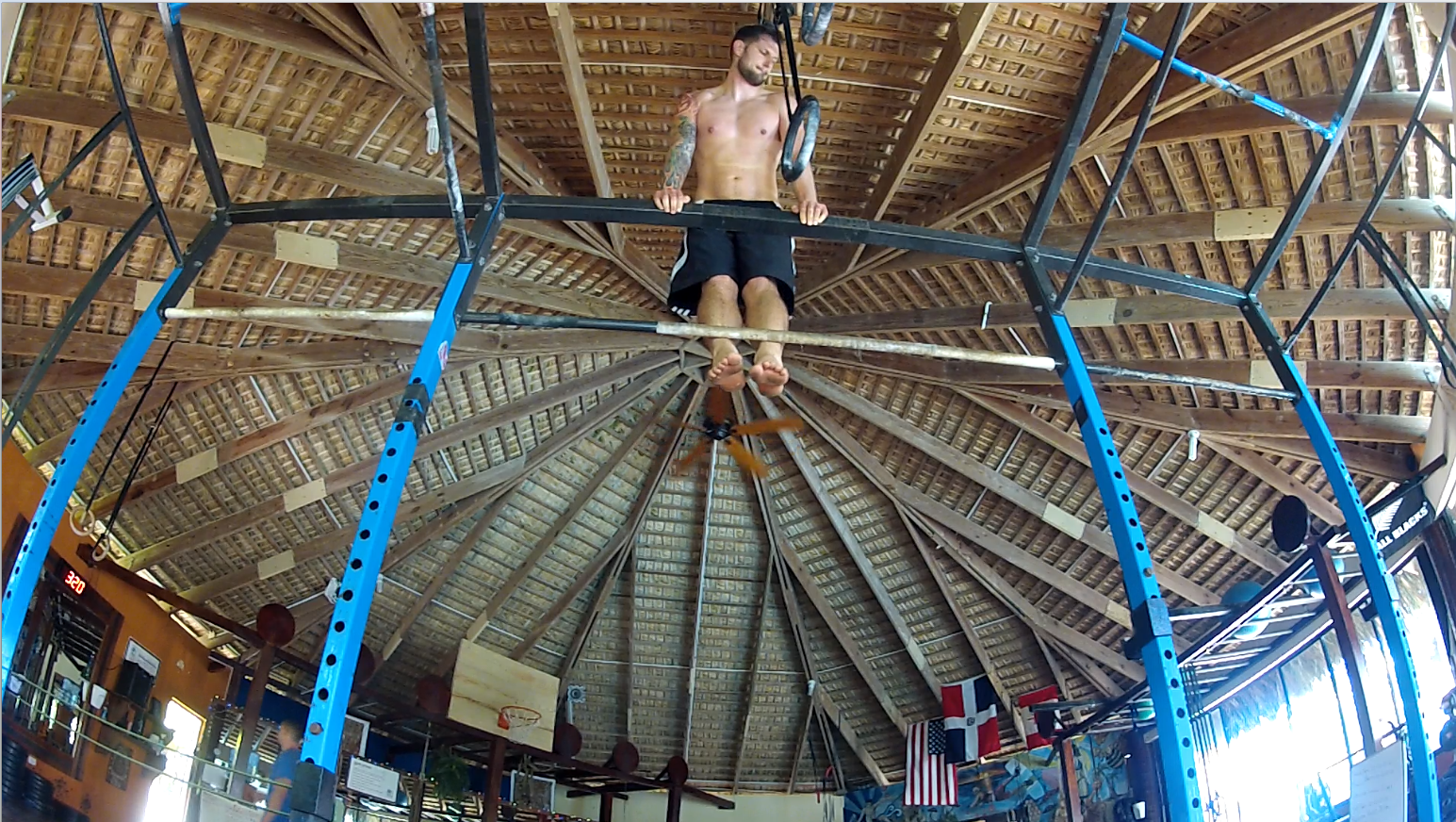
Calisthenics and kiteboarding go hand in hand
Kiteboarding workout routine
I did an article about this a couple years back. I'll sum up that beginner routine in this blog. You should always consult your doctor before starting any routine. Practiced three days a week, this will build the foundation needed for any aspiring wakestyle or freestyle kiteboarder. Exercise science & bro science goes deep. I'm not going to go down that rabbit hole. Here's what I do know; don't get caught up in your mind.
Simply start practicing, modifying and learning as you go. Work your way up to being able to do 3 sets of 10 repetitions for each exercise. Don't worry about how long it takes to get there. Do be consistent, and you will get there.
My last tip is to keep a log. It might seem excessive, but you will forget how many reps you did last week. Writing down your numbers and referencing them at the start of each workout will keep you objective and force you to improve.
Here's how it works.
- Complete thee sets of ten (or your personal max) repetitions before moving on to the next move.
- Rest one to three minutes between sets.
- Wait three minutes between moves
- Remember, it's okay if you can only do one rep at first. Just aim to do a little more every training session
1: Chin-ups (inside of wrist facing your body)
These are great for back and bicep strength as well as grip. Grip is important for unhooked riding. You'll also need the strength to pull that bar to your hip. Here is the proper form
Don't panic if you can't do a chin-up yet! Try Australian chin-ups. Start with a low bar and keep your feet on the floor or use a chair. Progress to doing negatives; meaning you start high and lower yourself to the ground as slow as you can.Not everyone can do a pull-up right away. Be patient and work at getting better every workout.
2: Wall squats
It's easy to see how this position relates to all board sports. This move is great for building endurance for those longer sessions. Sit back against the wall and bend your knees to a 90 degree angle, or as close to one as you can. Shoot for 30 seconds. Don’t sweat it if you can’t hold for long. Much like kiteboarding, these things take time and patience.
3: Chair dips
This will work your triceps. Like it sounds, grab a chair find a comfortable position that doesn't strain your wrist. Lower yourself down and up for as many reps as you can. Here is the form and a great channel to learn about fitness
4: Squats
Squats might be the most important move you can do. Powerful, explosive legs translates to more powerful and explosive pop on the water. It's similar to the wall squat, only now balance as well as more muscle comes into the equation. Watch how to squat
Keep your knee over the ankle. Squat down until your butt touches your calves, stand up, and repeat. If balance is an issue, use a wall or doorway. Eventually you will need weights to progress, or you can do more complicated moves like single leg squats, aptly named the pistol squat.
5: Push-ups
Everyone should be familiar with this. Try different angles. If standard is too hard, use a bench or table. Likewise, you can mix it up with decline push-ups or diamond push-ups. When you become advanced, try one arm pushups. Start with the archer pushup to learn these. Watch how to push up properly
6: Pull-ups (wrist facing away)
Hands-down my favorite upper body workout. There are so many variations and progressions that you will never get bored! Back, shoulders, arms and grip are all put to the test on these.
Practice these with your hands close together to simulate a handle pass. Don't be afraid to make the move easier until you can do a true pull-up. A chair under your feet goes a long way, as well as negatives.
7: Leg raise or L sit
Core is everything in kiteboarding! This simple exercise will build the core strength needed for most boardsports.
Leg raise: Hang from a secure pull-up bar and lift your legs to the sky, toes to the bar. If this hurts your shoulders, try an L sit. Note: do not do these unless the bar is secure. You don't want to drop onto your tailbone.
8: Work up to hand stand push-ups
This move is going to take time to learn. That said, it will improve your balance and body awareness immensely. Be careful on this one. It's going to take a lot of time and commitment before you can safely do these. There is no shame in sticking with the pike press.
Incorporate cardio and yoga.
Find a cardio routine you like and stick with it. The above routine is focused on endurance as well as muscular and neurological strength. You still need to take care of your heart and lungs. That means getting your heart rate up on a regular basis. Running, swimming, cycling... pick something you enjoy and practice three days a week on your off strength days.
I'm a huge advocate of incorporating a little bit of yoga or stretching into your routine. Athletes who operate at a high intensity should have some kind of recovery routine to balance things out and reduce stress.
Fuel up for better sessions
Aside from strength and endurance training, if you want to ride like an athlete, you have to eat like an athlete. This is an article on kiteboarding, so I don't want to ramble on about health. Granted, an athletic lifestyle perfectly complements a kiteboarder's lifestyle.
Long story short, eat well and take care of your body. It will go a long way in your energy and how you feel on the water. That means to eat lots of vegetables and fruit. Get plenty of protein from different sources, like quinoa, fish, and beans. Incorporate some healthy fats and eat a wide variety of natural real food grown from the ground. Avoid anything in a box at all costs. If you really want an energy boost, get fast food out of your life as it will only take away your energy.
I recommend you find a routine and recipes that you enjoy and can stick to year 'round. If you're interested in moving forward, add me on Instagram and send a DM. I'm happy to point you towards some helpful resources online.
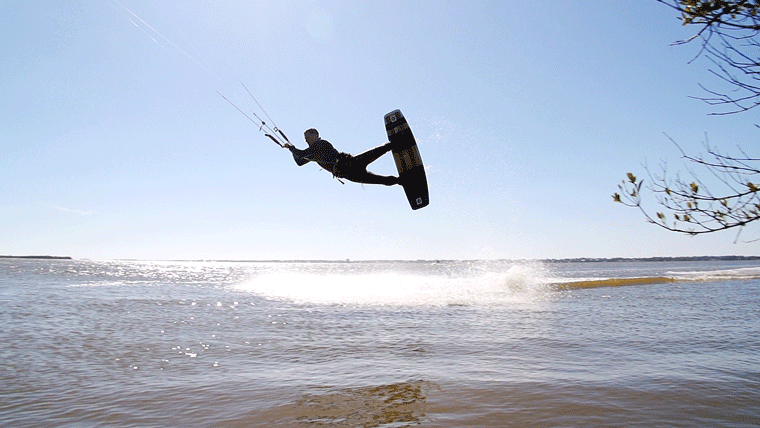
Rygo testing the 2019 Slingshot RPM in Cocoa Beach
The take-away
Kiteboarding is a sport and a lifestyle. If you adapt the habits of an athlete, you will perform like an athlete. A huge part of growth as a rider and a person is learning to deal with discomfort and maintain a sense of discipline to accomplish what you really want. This lifestyle isn't for everyone and you certainly don't have to live this way to enjoy kiteboarding. That said, if you aspire to break your own personal plateaus, overcome fears, and progress as a kiteboarder, adapting the habits and mindset of an athlete will do wonders for you.
Next time on Sessions
That's it for this week on Sessions. Stand by for the next batch of Versus videos. I've a couple in the line-up. We'll be doing some kite to kite comparison with Liquid Force and Slingshot kites. For the next episode of Sessions, I'm linking up with Blake to film our next Ride with Blake Playlist. We're making our way back to Key West for a fresh batch of tricks. If you have any requests, you can message me on Instagram as well. We're writing up the list right now.
 Ryan (Rygo) Goloversic
Ryan (Rygo) Goloversic
Just a dude from a kite shop testing all the gear one session at a time.
Many people dream of quitting their job, traveling the world and pursuing their passions. Rygo is one of those people who pulled the trigger. About eight years into a postal career, he decided to change everything and travel as a freelance videographer & writer. This took him from coast to coast and a variety of countries. Nowadays you can catch him on the phones, doing lessons, or working on videos. Of course, he still makes a point to travel as often as possible. His mission is to help people and share the stoke with his customers and students alike. Get out there and kiteboard.
Producer of: Ride with Blake I Sessions I Versus I Destinations I Foil Fridays
Recent Posts
-
Duotone Ventis 2025 | What's New?
If you're familiar with Duotone's Ventis, you know its specialty is freeriding in light wind …23rd Apr 2024 -
Duotone Ventis D/LAB 2025 Overview
If you ride in an area with multiple light wind days and need a wing that'll let you get o …23rd Apr 2024 -
Foil Drive | Essential Maintenance Tips to Help Enjoy Your Ride
Ryan from MACkite takes a few minutes to chat with Ben from Foil Drive and pick up some ti …22nd Apr 2024




